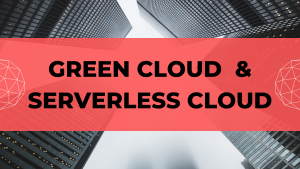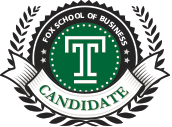Green Cloud Computing & Serverless Cloud Computing (MIS3406)
Green Cloud Computing & Serverless Cloud Computing:
What Are They And How Do They Connect?

Considering how many benefits have come with the rise of Cloud Technology, you might be surprised to learn that it can make a negative impact, specifically on the environment. Luckily, information technology professionals continue to think ahead and innovate for a brighter future. Green Cloud Computing, the reduced consumption of computing resources and their negative effects on the planet, allows firms to promote more sustainable practices. This strategy aims to cut down on energy consumption and carbon emissions that mainly harm the atmosphere. The construction and use of data centers add to the carbon emissions mentioned previously. Technology corporation Microsoft acknowledges that manufacturing less hardware in place of well-allocated cloud resources, boosting resource utilization efficiency, and working to recycle devices will play an important part in protecting the Earth from the consequences of computing (Microsoft). How can companies leverage cloud computing techniques to mitigate environmental repercussions? Serverless cloud computing may provide an answer. According to Amazon, serverless cloud computing is a technology used to run code, manage data, and integrate applications without needing to oversee servers (Amazon). The simplicity, scalability, and cost-effectiveness of this execution model make it ideal for those looking to spend less time on backend infrastructure and more time on producing optimized applications.
Throughout MIS3406, Fox’s course dedicated to introducing students to Cloud Architecture, we’ve touched upon what exactly makes these cloud infrastructures ideal for business use. The five pillars of a well-architected framework encompass the positive aspects of the technology, including cost-optimization, security, operational excellence, reliability, and performance efficiency. Serverless architectures champion the ideas of cost-optimization and operational excellence by getting rid of the need for manual infrastructure management. Green cloud technology works to use the five pillars in a way that is optimized for better allocation of resources like energy.
While the concept of a serverless architecture seems simple, it is important to recognize instances where firms have made use of it to see how exactly it fits into the business landscape. IBM’s case study on real estate/travel software company SiteSpirit reveals that serverless cloud computing helped the firm in its data-processing efforts, making its site ten times faster and 10% less costly. The resulting application, MediaSpirit, “relieved the pain of storing, tagging, retrieving and manipulating thousands of images—and is built on a serverless architecture to keep costs low” (IBM). Here, the serverless infrastructure not only helped SiteSpirit increase operational excellence but become more cost-efficient as well.
In terms of green cloud computing, companies like Etsy have switched to carbon-neutral options like Google Cloud Platform over time. At first, Etsy relied on physical data centers until they realized how difficult it was to continue planning and installing new server spaces. The firm found that cloud computing was about 2 million percent faster in comparison. After the corporation’s shift from more traditional data centers to a cloud-oriented approach where its “combined energy consumption decreased by an estimated 13% (from 7330 MWh in 2018 to 6376 MWh in 2019)” (ThoughtWorks). The allocation of more cloud-based resources allowed Etsy to become much greener in its effects on the Earth.
In the end, how do green cloud computing and serverless cloud computing connect? As it turns out, serverless cloud infrastructures can reduce energy consumption and carbon emissions because businesses will rely less on physical data centers as a result. So, in transitioning to serverless infrastructures, companies can increase efficiency, keep costs much lower, and decrease the amount of harm they are doing to the planet, essentially using it as a version of green cloud computing. Although we haven’t covered these two concepts in much depth over the course of MIS3406, they are important to know, especially for those wanting to pursue a career as a Cloud Architect, or those wanting to utilize more forward-thinking approaches in business.
References:
- By: IBM Cloud Education. “Serverless.” IBM, https://www.ibm.com/cloud/learn/serverless.
- Eyk, Erwin van. “Serverless Anwendungen Und Services in Der Cloud.” Amazon, Software & Support Media GmbH, 2019, https://aws.amazon.com/serverless/.
- “Green Cloud Computing.” Microsoft Research, 12 Jan. 2022, https://www.microsoft.com/en-us/research/project/green-cloud-computing/.
- “Green Cloud Tools Are Profitable for You and the Planet.” Thoughtworks, https://www.thoughtworks.com/insights/articles/green-cloud.

